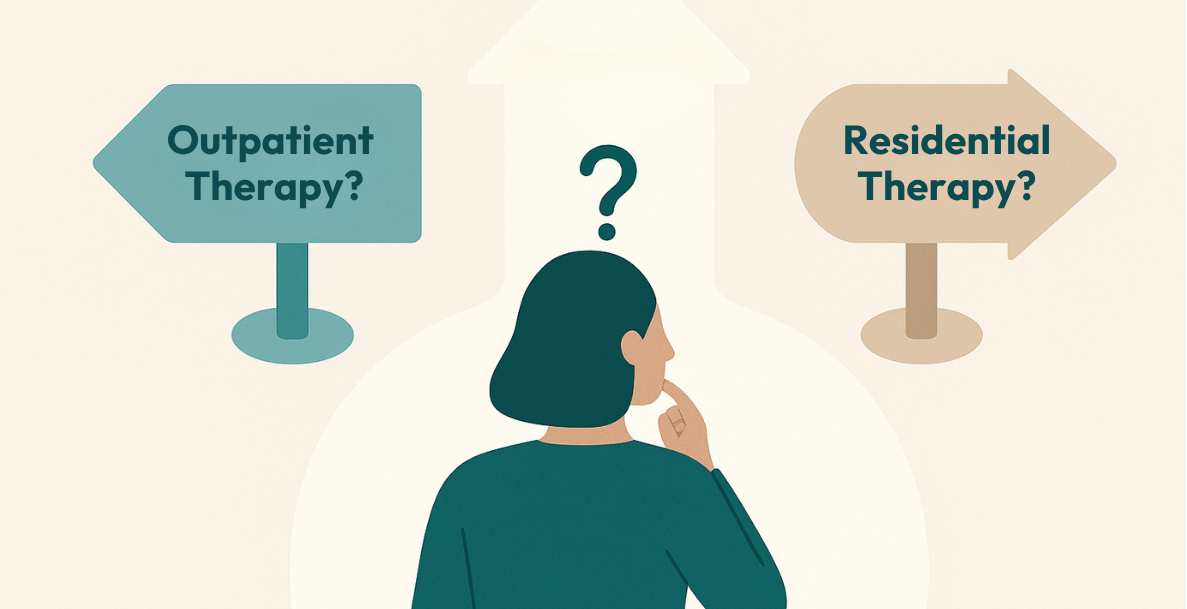There’s no denying that Borderline Personality Disorder (BPD) and Narcissistic Personality Disorder (NPD) are complex mental disorders that can appear similar to the outside observer. Both can result in challenging interpersonal relationships.
This article will explore both conditions, examine the potential environmental causes, discuss why they can be drawn together, and what can happen when they do. It’s important to remember that each person, their condition, and their relationship is unique, and that this article is a broad overview.
Understanding Borderline Personality Disorder
The DSM-IV defines Borderline Personality Disorder (BPD) as a “pervasive pattern of instability of interpersonal relationships, self-image and affects, and marked impulsivity”. In simpler terms, BPD is a condition that affects how a person feels about themselves, how they experience their emotions, and how they relate to other people.
Some of the more common symptoms include:
Dysfunctional interpersonal relationships
Instability in mood
Dysphoria
Self-injurious behaviour
Fear of abandonment
- Maladaptive coping behaviours[1]
- Impaired occupational functioning[2]
One of the easiest ways of understanding BPD is to see it as a condition that affects emotional regulation. People with BPD often experience emotions more intensely and for longer periods of time, and may find it much harder to return to a feeling of calm after becoming upset.
For example, while someone without BPD might feel annoyed by a situation, become frustrated, and then move on, a person with BPD may experience that same situation as overwhelming. The emotional reaction can feel all-consuming, physically intense, and difficult to control. The same is true for positive emotions, which can feel extremely powerful, euphoric, or consuming.
This intensity does not reflect a lack of strength or resilience. Rather, it reflects a nervous system that has learned to stay on high alert. Many people with BPD describe feeling emotions as “too much” or “too loud”, and report a deep fear of being rejected, abandoned, or misunderstood.
These emotional and relational patterns can place significant strain on friendships, romantic relationships, family dynamics, and work, often leading to feelings of shame, isolation, or confusion for both the individual and those around them.
The precise cause of Borderline Personality Disorder is still not fully understood, but, like many mental health conditions, it is thought to develop from a combination of genetic, psychological, and environmental factors, including:
Childhood abuse, particularly severe or prolonged abuse[3]
Neglect or emotional invalidation
Genetic vulnerability
Early separation from caregivers or loved ones
Importantly, BPD is not a character flaw or personal failure. It is a legitimate mental health condition, and with the right support, many people can learn to regulate their emotions, build safer relationships, and live more stable and fulfilling lives.
Understanding Narcissistic Personality Disorder
Research suggests that narcissism often begins to develop around the ages of seven or eight, when children start to compare themselves with others and form a sense of self. At its core, narcissism involves a deep belief of being superior to others, which, in some cases, can develop into Narcissistic Personality Disorder (NPD).
Narcissism is believed to arise from a mix of genetic and environmental factors. For example, being raised by caregivers who excessively praise achievements but offer limited emotional connection can create confusing messages of worth, increasing the risk of narcissistic traits or NPD.
Narcissism exists on a spectrum. Some people show traits, while others meet the criteria for NPD. Common features include:
Self-centred behaviour
Grandiosity
Exploiting others for personal gain
An intense need for admiration
Limited empathy
- A desire for control[4]
What Happens in a Relationship Between Someone With BPD and Someone With NPD?
Relationships between people with BPD and NPD often form a complex dynamic where both individuals attempt to fulfil their own emotional and psychological needs. For the person with BPD, they see everything they can’t do in the narcissist, who comes across as someone who appears confident and self-assured. They can feel like the perfect counterbalance to their own insecurities, and this is amplified by the emotional dysregulation of BPD.
When the person with NPD meets someone with BPD, they can tend to use them to fulfil their need for validation, often at the expense of the other’s boundaries and feelings. This need for attention couples with the heightened emotions of BPD to make a volatile mix. If the person with NPD’s needs aren’t met, they may turn cold and distant, triggering the person with BPD’s fear of abandonment.
However, the person with BPD isn’t always the victim. In certain instances, their behaviour can push the person with NPD so far that they decide to move on and get their needs met by someone else. If the person with BPD pursues them after this, it can play into the person with NPD’s desire for attention and control.
How Therapy Helps Heal These Dynamics
Healing the dynamic between BPD and NPD isn’t about labelling someone as “the problem.” It’s about understanding what the nervous system, and the individual as a whole developed and learned behaviours in order to survive.
In therapy, the focus shifts from blame to awareness. Both people begin to see how their patterns were formed, often long before the relationship began. The person with BPD can learn to regulate overwhelming emotional states and rebuild a sense of safety from the inside out. The person with NPD can begin to explore what sits underneath the need for control, validation, or distance, often uncovering unprocessed shame, fear, or emotional neglect.
Therapy creates a space where reactions can be slowed down. Where rupture no longer has to mean abandonment. Where vulnerability becomes safer. Over time, this work helps transform cycles of chaos, withdrawal, and intensity into healthier boundaries, deeper self-awareness, and more stable, compassionate connection.
Explore Our Treatment Options
Find Out What Makes Us Different
The staff at our globally recognised mental health clinic have been informed, trained and supervised by some of the world’s leading trauma experts such as Dr Bessel van der Kolk, Dr Janina Fisher, Dr Stephen Porges, Dr Dick Schwartz and more.
Point To Remember
It’s important to remember that although the behaviours of both parties in this relationship have the capacity to cause pain and discomfort, it’s not done with malice. As distasteful as they may seem, they’re simply pursuing a maladaptive approach (often learned in childhood)[5] to get their needs met.
However, in the context of a BPD/NPD relationship, these issues are not resolved by following the same patterns – they need to be addressed in trauma-informed therapy. By breaking the cycle with therapeutic intervention, it can prevent children from growing up in chaotic environments and potentially learning those maladaptive coping strategies.
If you have a client or know of someone struggling to heal from psychological trauma, reach out to us at Khiron Clinics. We believe that we can improve therapeutic outcomes and avoid misdiagnosis by providing an effective residential program and outpatient therapies addressing underlying psychological trauma. Allow us to help you find the path to realistic, long-lasting recovery. For more information, call us today. UK: 020 3811 2575 (24 hours). USA: (877) 561 4453 (24 hours).
FAQs
Can an NPD and BPD relationship work?
Yes, but it can be very challenging without support. These relationships tend to be intense, emotionally charged, and easily destabilised. With awareness, clear boundaries, and therapeutic support, healthier dynamics are possible, but both people usually need to be willing to reflect on their patterns and commit to change.
Do narcissism and BPD go together?
They can. While BPD and narcissism are different, they can feel magnetically drawn to each other. Both often involve deep fears of abandonment, rejection, or shame, expressed in very different ways. This can create a powerful pull, but also a highly reactive and unstable bond.
Can you have BPD and Narcissistic Personality Disorder?
Yes. It is possible for someone to have traits of both, or meet the criteria for both diagnoses. Mental health conditions rarely exist in isolation. Overlapping traits can make emotions, relationships, and self-image feel even more confusing and intense, which is why careful, personalised assessment is important.
Can therapy help someone with Borderline Personality Disorder recover from a narcissistic relationship?
Yes. Therapy can support people in processing emotional harm, rebuilding trust in themselves, and reconnecting with their boundaries. It helps create a sense of safety again, often after long periods of confusion, self-doubt, and emotional exhaustion.
How can counselling support recovery after leaving a narcissist?
Counselling offers a space to make sense of what happened without judgement. It can help people untangle trauma bonds, rebuild self-worth, and slowly restore the nervous system after long periods of hypervigilance. Recovery is not about becoming “stronger,” but about becoming safer within yourself again.
Sources:
[1] Antai-Otong, Deborah. “Treatment considerations for the patient with borderline personality disorder.” The Nursing clinics of North America vol. 38,1 (2003): 101-9. doi:10.1016/s0029-6465(02)00063-4
[2] Zanarini, M C et al. “Axis I comorbidity of borderline personality disorder.” The American journal of psychiatry vol. 155,12 (1998): 1733-9. doi:10.1176/ajp.155.12.1733
[3] Lieb, Klaus et al. “Borderline personality disorder.” Lancet (London, England) vol. 364,9432 (2004): 453-61. doi:10.1016/S0140-6736(04)16770-6
[4] Cooper, Luke D et al. “Self- and informant-reported perspectives on symptoms of narcissistic personality disorder.” Personality disorders vol. 3,2 (2012): 140-54. doi:10.1037/a0026576
[5] Lachkar, Joan. The Narcissistic/Borderline Couple. 2nd ed., Brunner-Routledge, 2004.re






